The Manhattan Districts 1/2/5 Garage and Spring Street Salt Shed up the ante in municipal sanitation design
By Justine Testado|
Monday, Apr 24, 2017
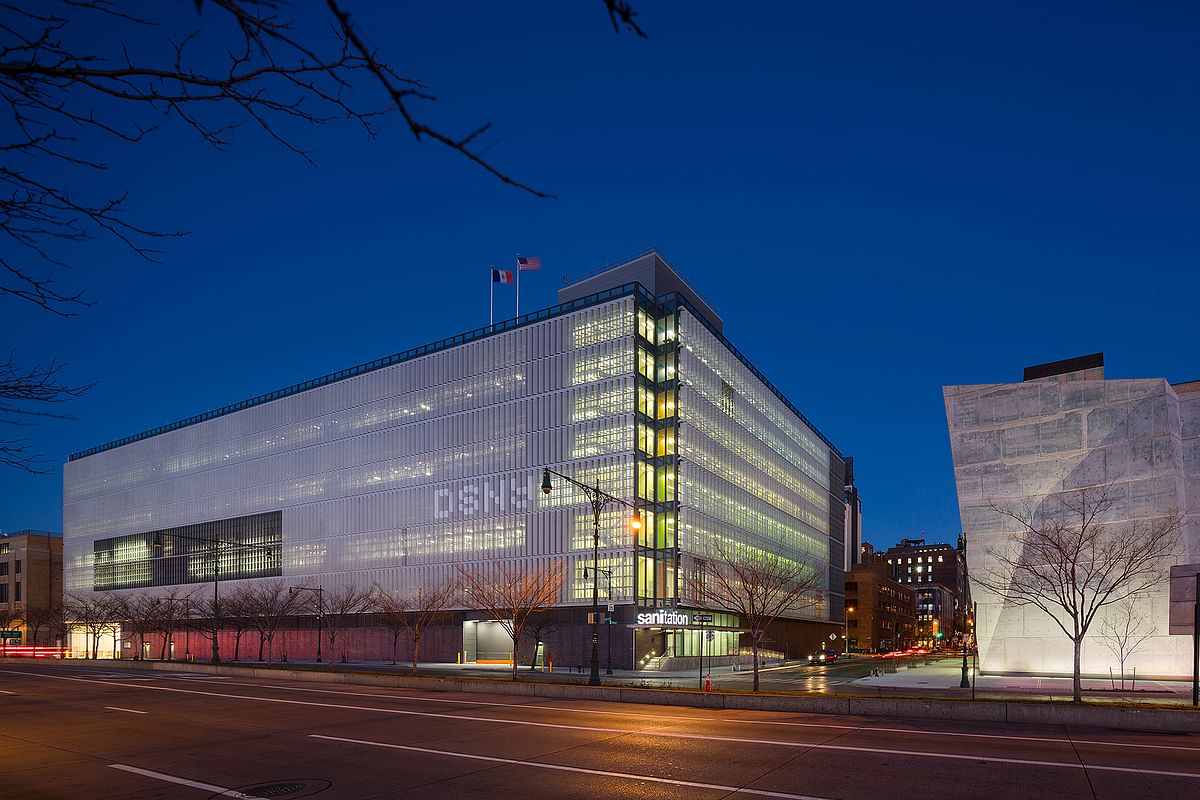
Related
Serving almost 300,000 residents, New York City's Manhattan Districts 1/2/5 Garage and Spring Street Salt Shed change the game when it comes to the design of municipal sanitation buildings. Designed by Dattner Architects along with WXY Architecture + Urban Design, the two buildings are the first LEED-rated New York City Department of Sanitation facility. The buildings are integrated with sustainability features as well as features that encourage the well-being of employees. Most recently, the project was selected as one of the AIA COTE's Top Ten Green Projects for 2017.
Read on for more about the project.

Project description: “The Garage and Salt Shed celebrate the role of civic infrastructure by integrating architectural design with sustainability and a sensitivity to the urban context. The building is wrapped in a custom perforated double-skin facade that reduces solar gain while allowing daylight and views in personnel areas.”
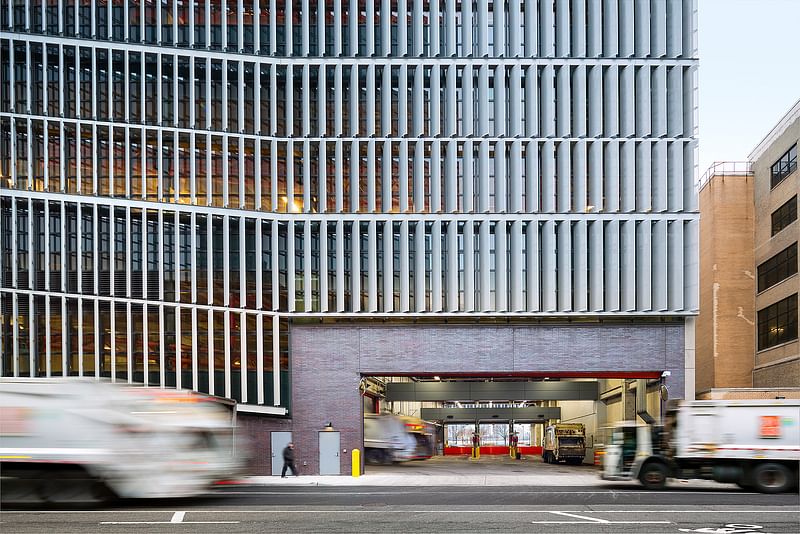
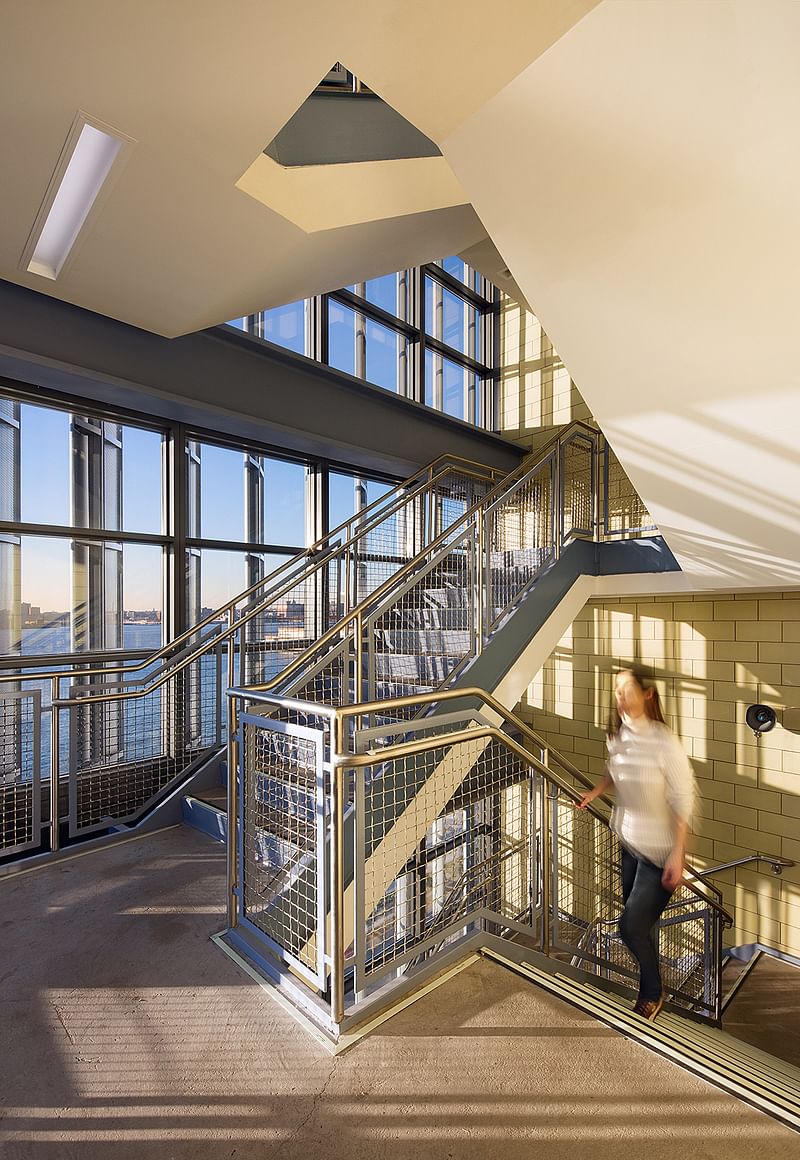
“Within the year of opening the Manhattan Districts 1/2/5 Garage & Salt Shed have become a source of neighborhood pride. This pair of public buildings, that serves close to 300,000 residents, are the home for 150 sanitation vehicles, 3 districts’ equipment including front-end loaders, salt spreaders, heavy-equipment wreckers, personnel vehicles; separate vehicle wash, and 250 workers who have offices, locker rooms, training and lunch rooms for each district; centralized fueling and repair facilities and 5,000 tons of salt for winter snow clearing.”
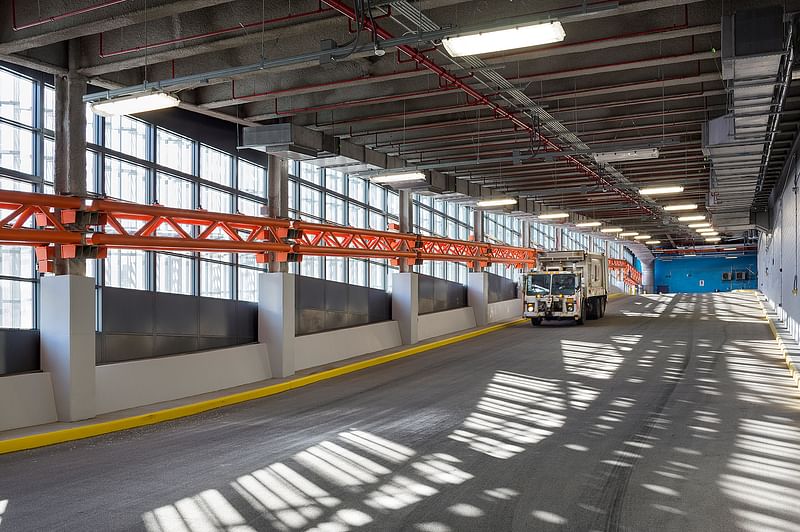
“The team worked closely with DSNY and a Community Board approvals process, through a series of workshops to develop the program requirements for a vertically organized multi-district garage. Through this process, opportunities were identified for combining shared spaces, reducing floor to floor heights, and optimizing circulation efficiency.”
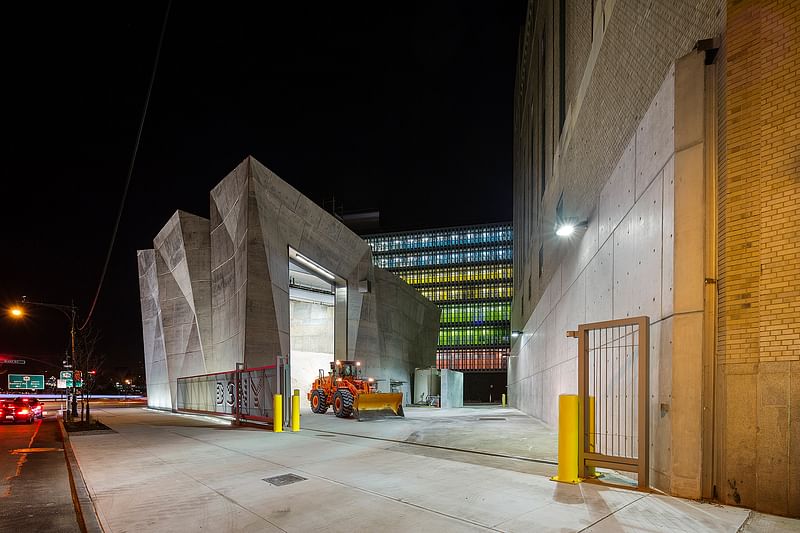
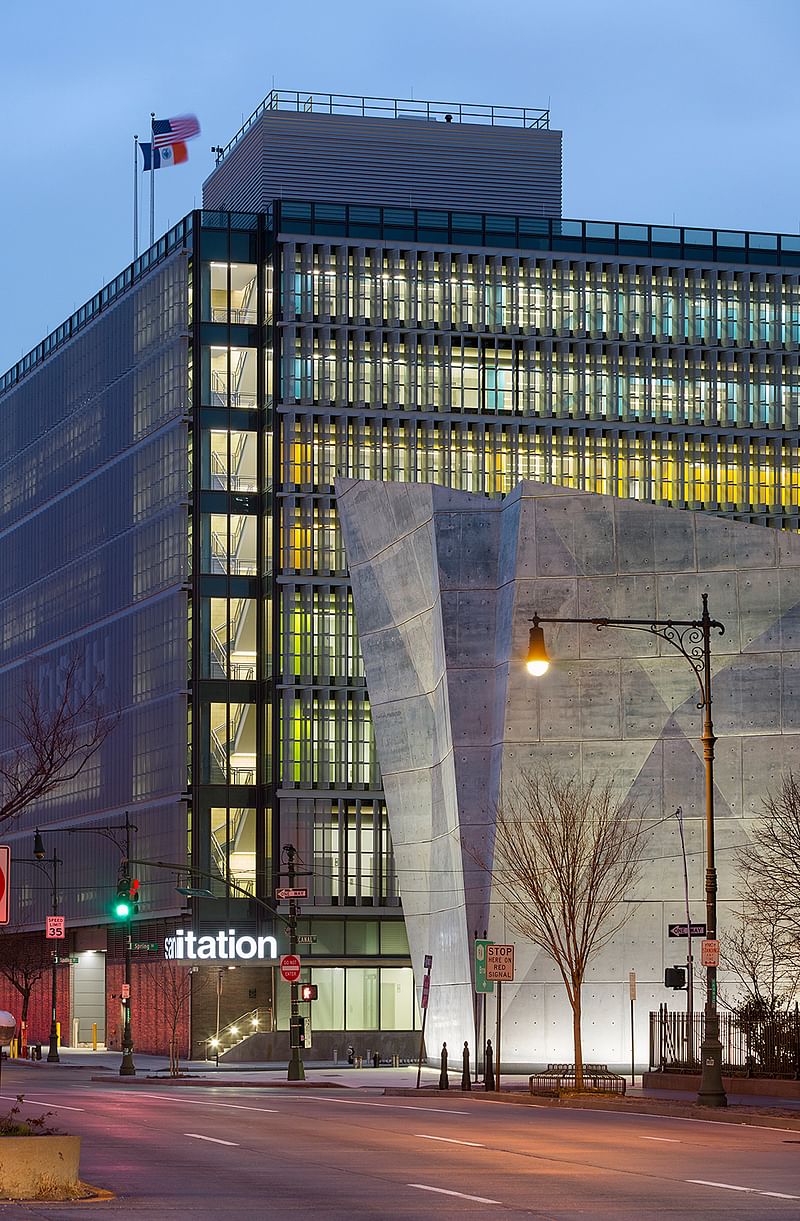
“The Salt Shed’s crystalline, faceted architectural concrete planes enliven this highly visible structure, creating a sculptural landmark in the neighborhood. It tapers toward the bottom, creating more pedestrian space and emerges from a moat of textured glass paving, which reflects the sidewalk illumination.”
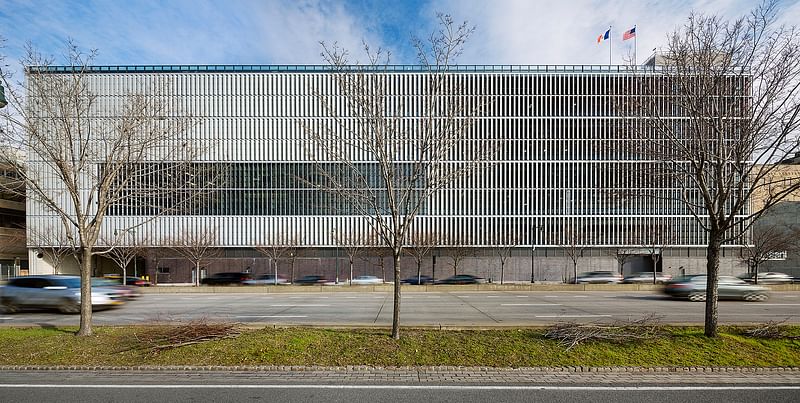
“A double-skin façade wraps the upper floors of the garage, comprised of glazed curtain wall and 2,600 custom perforated-aluminum solar shading devices (“fins”), which float above the building’s dark articulated masonry base. The fins reduce solar heat gain and glare, create an ethereal wrapper to obscure mechanical louvers and shield the view of headlights from neighbors.”
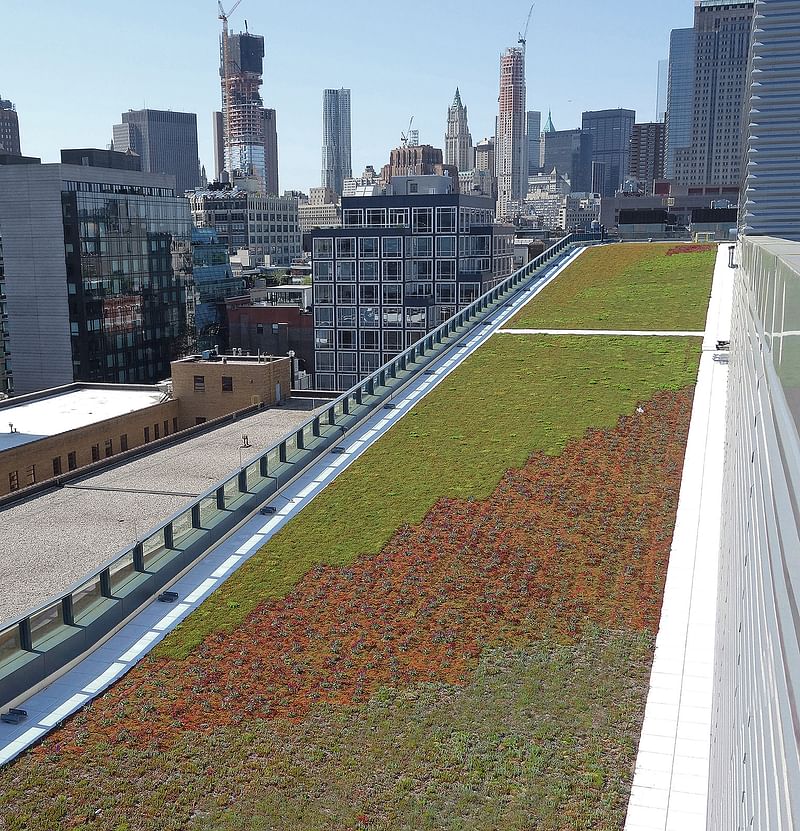
“The 1.5 acre green roof protects the roof membrane, reduces heat-island effect, enhances storm water retention and thermal performance, promotes biodiversity of native species, and softens the view from the surrounding buildings.
This harvested non‐potable water supply from the roof's storm water and waste steam condensate from municipal steam used to heat and cool the building are used as a source for flushing restroom fixtures and for truck wash. The Garage is a key project for NYC's Active Design Program, promoting health and fitness of occupants through building design.”
In case you missed it, see the rest of the AIA COTE Top Ten Green Projects in the link below.

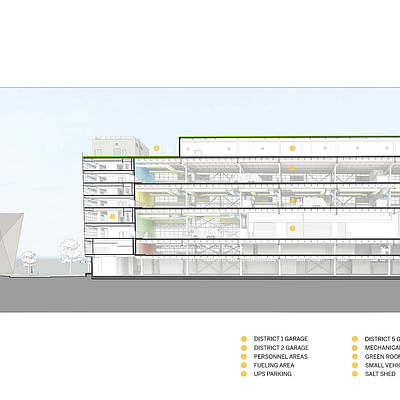
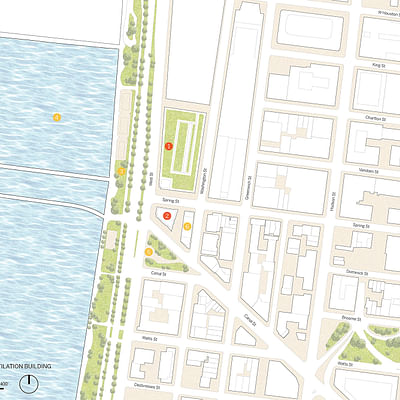

Share
0 Comments
Comment as :